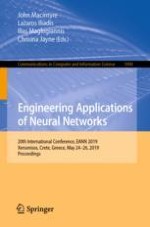2019 | OriginalPaper | Buchkapitel
Canonical Correlation Analysis Framework for the Reduction of Test Time in Industrial Manufacturing Quality Tests
verfasst von : Paul Alexandru Bucur, Philipp Hungerländer
Erschienen in: Engineering Applications of Neural Networks
Aktivieren Sie unsere intelligente Suche, um passende Fachinhalte oder Patente zu finden.
Wählen Sie Textabschnitte aus um mit Künstlicher Intelligenz passenden Patente zu finden. powered by
Markieren Sie Textabschnitte, um KI-gestützt weitere passende Inhalte zu finden. powered by
